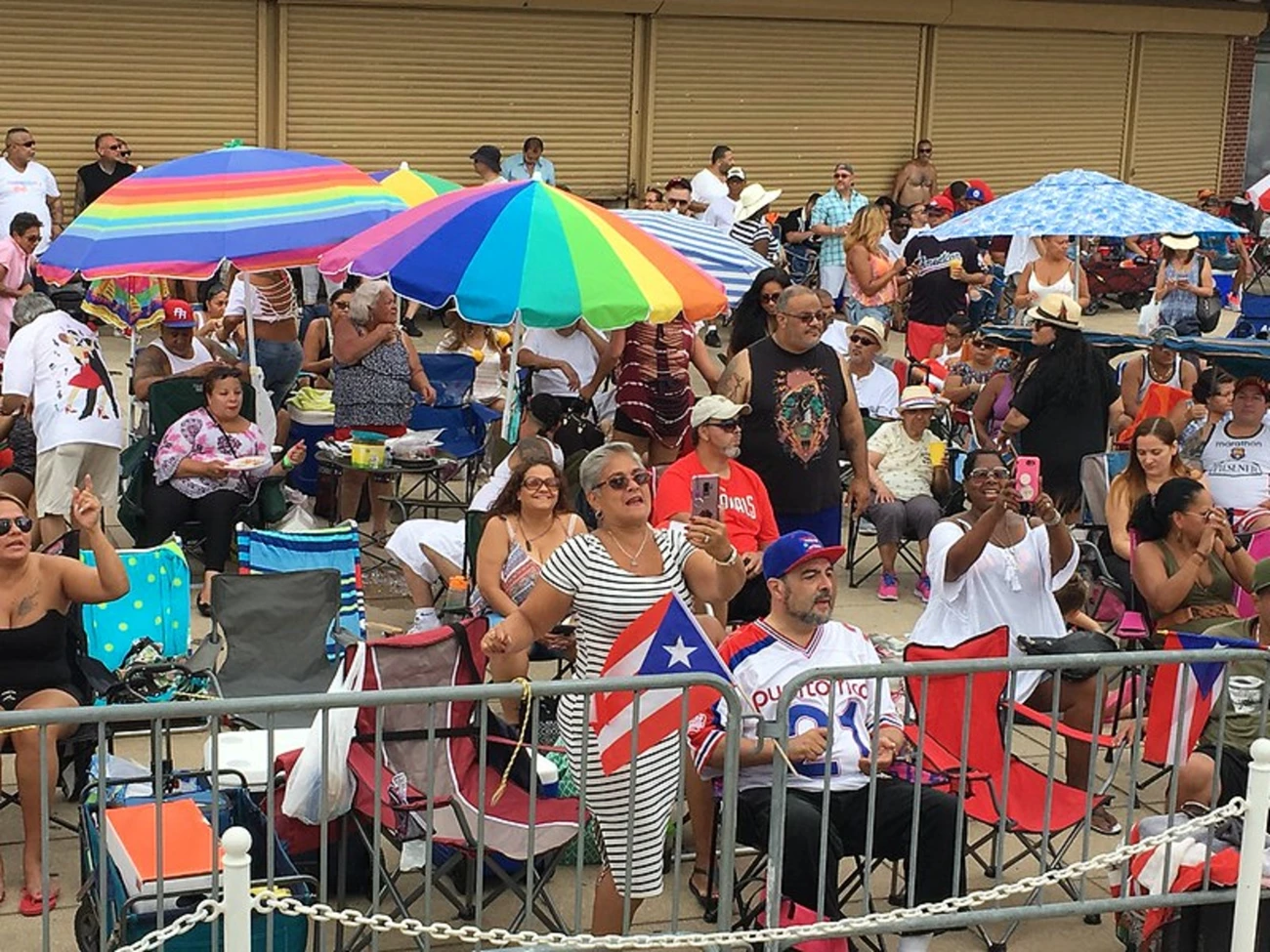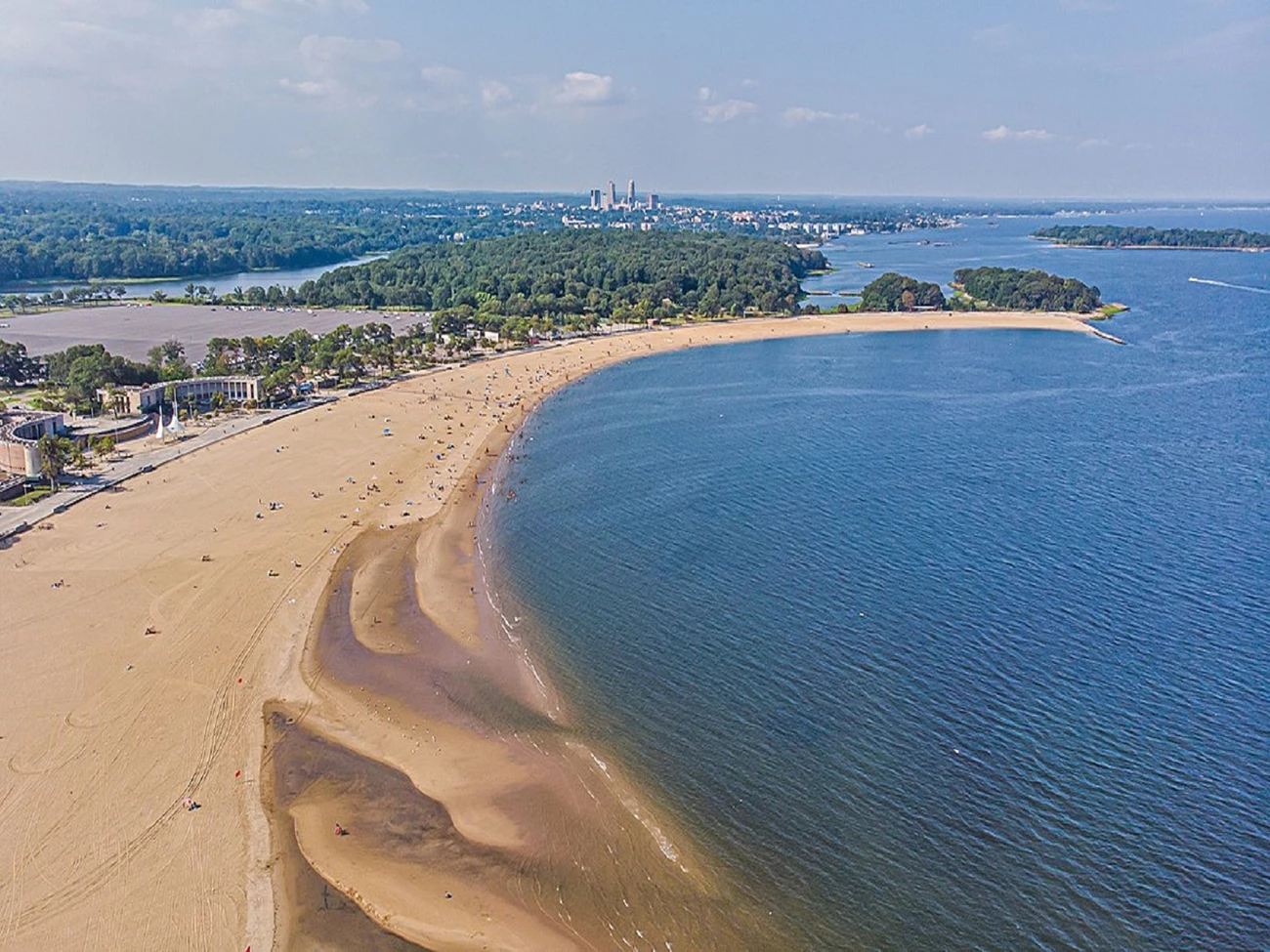Last updated: August 2, 2023
Article
Orchard Beach: Cultural Hub for Salsa
Orchard Beach, located in the Bronx, New York, stands as a timeless place of leisure and escape for generations of New Yorkers. This iconic stretch of sand and surf has a rich history that dates back to the 1930s. It played a significant role as a gathering space during the salsa movement of the 60s and 70s and continues to be a cultural hub for salsa.


Left image
Orchard Beach concert
Credit: Flickr Attribution-NoDerivs 2.0 Generic (CC BY-ND 2.0)
Right image
Orchard Beach, Pelham Bay Park, The Bronx, 2020.
Credit: Photo by Bebo2good1, CC BY-SA 4.0, Wikimedia Commons.
Orchard Beach was designed by Robert Moses and opened in 1936, drawing in over 50,000 visitors during its inaugural season. Moses’ vision was for this space to be a recreational space for the working-class residents of the Bronx, primarily those of Jewish and Irish descent. As the years passed by and more Puerto Ricans moved into the neighborhood, it became a space for families to spend their holidays and weekends. Orchard Beach also acted as a stage for musicians and DJs to show off their talents. Mambo dancer and DJ Ernie Ensley fostered a space for salsa by spinning his records during the 1950s.
During the 1960s, Orchard Beach was one of the few public spaces in New York City that was desegregated. The beach brought people from various backgrounds together, allowing for the sharing of experiences, traditions, and culture. Along with salsa, you could hear jazz and R&B along its shores—at times fusing and experimenting with salsa sounds. Notably, the Fania All-Stars frequently performed at Orchard Beach, drawing in massive crowds. The beach, infused with the sounds of salsa, created a sense of community and belonging. During a renovation initiative period in the 80s, the local vendors were removed along with the mayor’s office designating it as a quiet zone. Despite these setbacks, Orchard Beach did not stop being a place of sound and celebration. The organization of Salsa Sundays by DJ Ernie Ensley and later DJ Carlos Santiago helped Orchard Beach continue to be a place of gathering, recreation, and entertainment. Orchard Beach serves as a place of pride and empowerment for the local Bronx community and salsa lovers alike.
The promenade and bathhouse within the location were designated as a city landmark by the New York City Landmarks Preservation Commision in 2006. New York City is a Certified Local Government.
This article was researched and written by Melissa Hurtado, Heritage Education Fellow, Cultural Resources Office of Interpretation and Education.
Echeverría, Marcos. “Orchard Beach.” Where We Were Safe. 2019. http://whereweweresafe.org/#Orchard_Beach.
Caro, Robert. The Power Broker: Robert Moses and the Fall of New York. New York: Knopf, 1974.
Narvaez, A, A. “Orchard Beach on Holiday Is a Puerto Rican Fiesta.” The New York Times. July 5, 1973. https://www.nytimes.com/1973/07/05/archives/orchard-beach-on-holiday-is-a-puerto-rican-fiesta-impromptu-food.html.
New York City Landmarks Preservation Commission. "Orchard Beach Bathhouse and Promenade." June 20, 2006. https://web.archive.org/web/20180612142104/http://www.nyc.gov/html/lpc/downloads/pdf/reports/orchardbeach.pdf.
